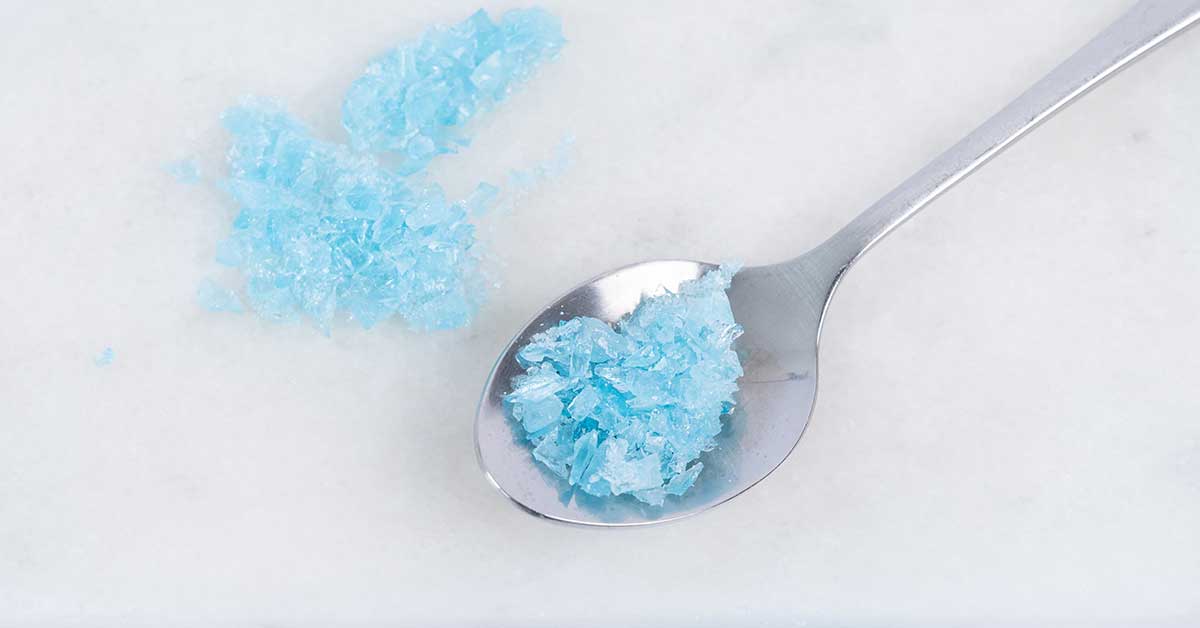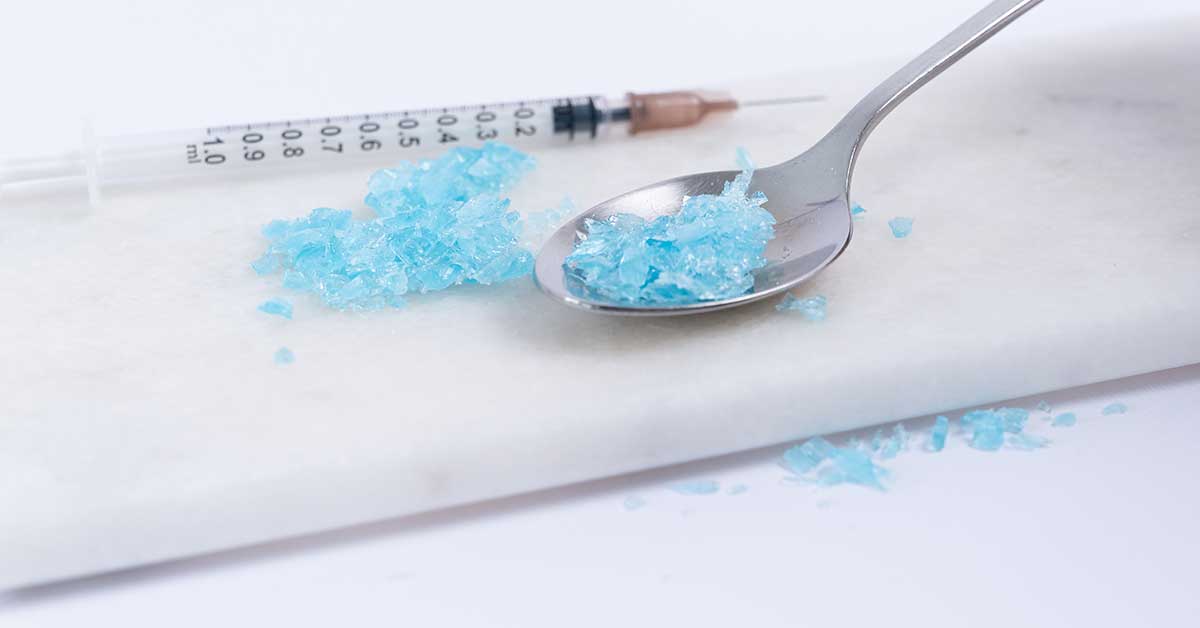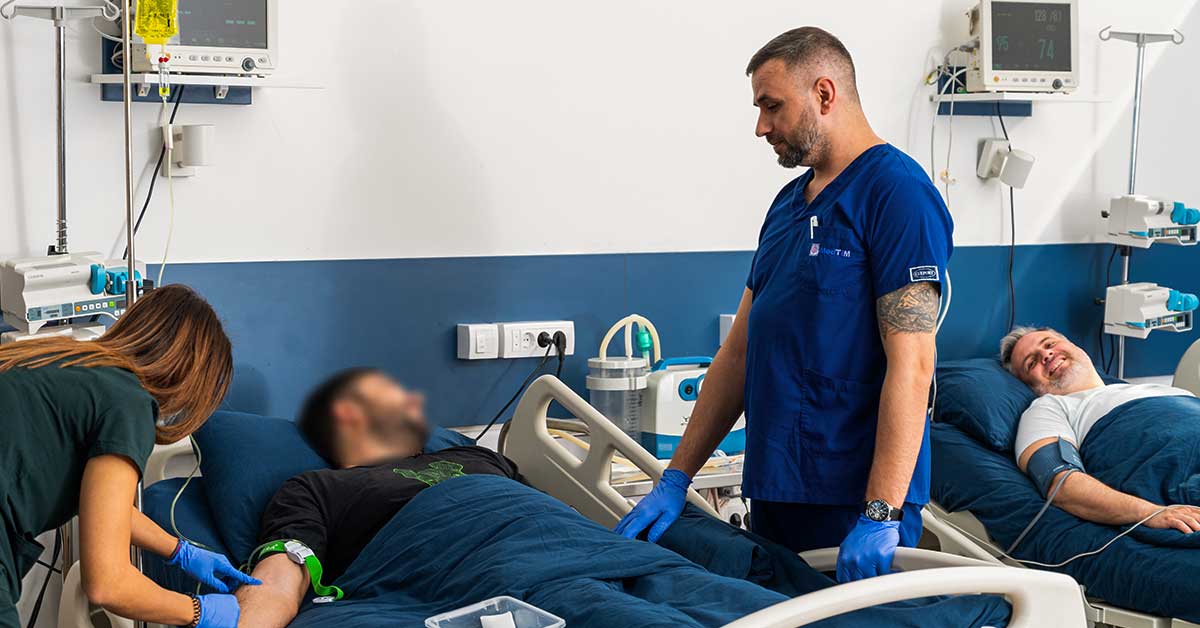Crystal meth addiction treatment (methamphetamine)
Addiction to crystal meth, also known as methamphetamine, is one of the most severe forms of addiction that modern medicine faces. This synthetic drug acts directly on the central nervous system, creating an immediate feeling of euphoria, hyperactivity, and increased energy. However, these effects are short-lived, and the cost to the body — physically, mentally, and emotionally — is extremely high.
People who use crystal meth very quickly develop a strong addiction. As tolerance increases, use becomes more frequent and in larger amounts, leading to serious health consequences, including damage to the brain, heart, liver, and overall psychophysical functioning.
This is why timely and professional treatment for crystal meth addiction is crucial for recovery and the prevention of permanent damage. Learn how to recognise addiction, what the detoxification process involves, how long rehabilitation takes, and what the treatment entails.
What is crystal meth (methamphetamine)?
Crystal meth is a powerful synthetic stimulant that affects the central nervous system, speeding up brain activity and causing a strong psychostimulant effect. When used illegally, it most often appears in the form of transparent crystals or a white powdery substance and is known by street names such as crystal meth, meth, tina, ice, or glass.
Methamphetamine was first synthesised at the end of the 19th century, and in the 20th century it was used medically to treat disorders such as ADHD and severe obesity – albeit in much lower doses than those misused today.
Because of its fast and powerful effects, crystal meth quickly becomes the drug of choice for people seeking:
- a feeling of power and euphoria,
- prolonged alertness and focus,
- increased confidence,
- or even heightened sexual drive (often used in the context of so-called “chemsex”).
Unfortunately, it is precisely because of these short-term effects that this drug causes extremely strong psychological and physical dependence after just a few uses.
How addictive is crystal meth?
Crystal meth (methamphetamine) causes addiction through its strong and direct effect on the nervous system, particularly on the dopamine receptors in the brain. After use, there is a sudden increase in the level of dopamine — the neurotransmitter responsible for feelings of pleasure, motivation, and reward.
This artificial “dopamine hit” creates an intense feeling of euphoria and heightened abilities. However, the body quickly responds by reducing its natural production of dopamine — meaning the person becomes dependent on the external substance in order to feel “normal” again.
The addiction mechanism includes:
- Rapid development of tolerance – increasingly higher doses are needed to achieve the same effect.
- Strong psychological triggers – linked to a “false sense of control” and enhanced abilities.ološki okidači – povezanost sa “lažnim osećajem kontrole” i sposobnosti.
- Physical dependence – without the substance, fatigue, depression, and irritability occur.
- Extremely strong craving – the urge to use again can persist for weeks after stopping.
Over time, the person loses the ability to feel pleasure without the drug, which further reinforces the vicious cycle of dependence. Even when the desire to quit arises, the physical and emotional withdrawal symptoms are often so intense that treatment is only possible under professional medical supervision.
Why is timely addiction treatment important?
Crystal meth addiction is progressive and devastating — the longer the use continues, the more severe and harder to reverse the health consequences become. Timely treatment significantly increases the chances of full recovery, restoration of psychological balance, and preservation of vital bodily functions.
Risks of untreated addiction:
- Psychiatric disorders — paranoid thoughts, hallucinations, depression, anxiety
- Cardiovascular problems — high blood pressure, rapid pulse, risk of heart attack and stroke
- Neurological damage — loss of concentration, memory impairment, permanent cognitive damage
- Physical deterioration — weight loss, damage to the liver, kidneys, teeth, and skin
- Social isolation — loss of family, job, and self-confidence
If treatment is not started in time, the consequences can be permanent and life-threatening. Many people with long-term addiction enter a state of complete personality disintegration, and the possibility of recovering without professional help is almost non-existent.
That is why timely medical intervention is crucial — especially when the first symptoms of addiction appear, as this is when the body has the greatest potential for recovery.
Recognising crystal meth addiction
Identifying crystal meth (methamphetamine) addiction at an early stage is key to a timely response and successful treatment. Addiction doesn’t develop overnight, but due to the drug’s intense effects, symptoms can appear quickly — psychologically, physically, and socially.
Mental and physical symptoms of addiction:
- Sudden bursts of energy and insomnia lasting for days
- Intense euphoria followed by a sudden drop in mood
- Anxiety, paranoia, hallucinations
- Loss of appetite and drastic weight loss
- Muscle spasms, twitching, and sweating
- Skin damage (caused by compulsive scratching)
- Dry mouth, tooth decay, and rotting teeth (commonly referred to as “meth mouth”)
Changes in behaviour and daily functioning:
- Increased irritability, aggression, and suspiciousness
- Cutting off contact with family and friends
- Loss of interest in work, school, and hobbies
- Becoming withdrawn and hiding signs of use
- Engaging in risky behaviours (theft, promiscuity, driving under the influence of crystal meth)
- Obsessive drug-seeking and neglect of basic daily responsibilities
If you notice these changes in yourself or a loved one, it is important not to wait — the sooner you seek professional help, the greater the chances of successful treatment and a return to normal life.
Consequences of using crystal meth
The use of crystal meth (methamphetamine) causes serious harm, with effects appearing even after the first few uses. Long-term use can lead to permanent and potentially fatal damage. The more frequent and prolonged the use, the more severe and deep-rooted the consequences — both physically and psychologically.
Short-term effects: what happens immediately after consumption?
- Intense euphoria and a sense of power
- Increased alertness and physical endurance
- Sudden loss of appetite
- Rapid heartbeat and raised blood pressure
- Increased body temperature and sweating
- Inability to sleep (insomnia lasting up to 72 hours)
- Nervousness, anxiety, and impulsiveness
- Increased sexual desire, often accompanied by risky behaviour
Long-term effects: permanent damage and complications
- Brain damage — problems with memory, concentration, and depression
- Paranoia, psychotic episodes, and hallucinations
- Heart problems — high risk of heart attack and stroke
- Chronic exhaustion and loss of muscle mass
- Severe changes in appearance — weight loss, greyish skin, and tooth decay
- “Meth mouth” — characteristic tooth decay and loss
- Weakened immune system and frequent infections
- Suicidal thoughts and behaviours
People who use crystal meth over a long period often develop lasting anxiety, depression, and insomnia, which may persist even after stopping use — due to changes in brain neurochemistry.

Crystal Meth Detoxification Process
Detoxification is the first and most important step in the treatment of crystal meth addiction. It involves the gradual and controlled elimination of the drug from the body, while also alleviating the physical and psychological symptoms of withdrawal.
Unlike abrupt cessation, which is often unsuccessful and potentially dangerous, medical detoxification is carried out under professional supervision in a safe and supportive environment.
What does medical detox involve?
- Comprehensive clinical assessment — evaluation of the patient’s physical and psychological condition
- Monitoring of vital functions — heart rate, blood pressure, temperature, liver and kidney function
- Administration of medication — to reduce the symptoms of withdrawal
- Stabilisation of sleep, mood, and appetite
- Psychological support from a therapist or psychiatrist
The goal of this process is not only to remove the drug from the body, but also to prepare the patient for further rehabilitation — as the real battle begins only after the physical detoxification is complete.
The importance of professional supervision during detoxification
- Severe depression,
- Anxiety and panic attacks,
- Suicidal thoughts,
- Strong cravings for the drug,
- Physical symptoms such as tremors, sweating, headaches, and rapid pulse.
This is why detoxification must be overseen and managed by a medical team experienced in treating patients with severe forms of addiction.
This approach reduces the risk of complications and provides the patient with safety, support, and the right conditions to continue the recovery process.
Phases of crystal meth detoxification
The detoxification process from crystal meth varies for each individual — depending on the length of use, method of consumption, combination with other substances, and overall health condition.
However, for most patients, detoxification goes through four main phases, each with its own characteristic symptoms and duration.
First 48 hours: initial withdrawal symptoms
- Extreme exhaustion and loss of energy
- Sudden mood swings
- Intense feelings of sadness or emptiness
- Increased need for sleep
- Physical symptoms: sweating, headache, nausea, muscle pain
This is the most vulnerable phase for the patient and carries a high risk of relapse, so constant supervision by a professional team is essential.
Days 3 to 10: peak symptoms
- Anxiety, depressive thoughts
- Insomnia or disrupted sleep
- Strong emotional fluctuations
- Panic attacks, paranoid thoughts
- Intense drug cravings (craving)
Thanks to medication and therapy, these symptoms can be significantly alleviated, keeping the patient safe and stable.
Days 14 to 20: physical recovery
- Emotional stabilisation,
- Motivation for continued recovery,
- Strengthening inner resilience and self-confidence.
After 30 days: psychological challenges and stabilisation
- Gradual restoration of the dopamine system (which can take months)
- Feelings of emptiness and loss of identity
- Fear of returning to everyday life
- Continued need for support and structure
For this reason, it is important that following detoxification, the patient enters rehabilitation — to address the root causes of addiction, develop new habits, and ensure long-term abstinence.
How to recognise symptoms after stopping use?
After a person stops using crystal meth, the body and brain go through a recovery phase that often involves severe and unpleasant symptoms. These symptoms are part of the withdrawal crisis and can last for days, weeks, or even months — depending on the length and intensity of use.
Understanding these symptoms is crucial so that the patient, their family, and the therapeutic team know what to expect and how to respond appropriately.
Physical symptoms after stopping use:
- Extreme fatigue and weakness
- Insomnia or, in some cases, excessive sleepiness
- Sweating, tremors, and headaches
- Dehydration and dry mouth
- Body aches, especially in muscles and joints
- Increased appetite (after prolonged loss of appetite)
- Dizziness and digestive problems
While these symptoms can be physically exhausting, they are rarely life-threatening, but they do require medical support.
Psychological symptoms after stopping use:
- Depression and feelings of emptiness
- Anxiety, restlessness, and nervousness
- Anhedonia — inability to feel pleasure
- Reduced motivation and difficulty making decisions
- Intense drug cravings
- Sudden mood swings
- Suicidal thoughts
These symptoms often last longer than the physical ones and represent the main obstacle to sustained abstinence. Therefore, psychological support at this stage is essential to help the patient stabilise, build strength, and maintain motivation for recovery.
Factors affecting the speed of recovery
The speed and success of recovery from crystal meth addiction vary from person to person. There is no universal timeframe — some patients stabilise within a few weeks, while others may require several months to regain their psychophysical balance.
Several factors influence the course and duration of recovery, and understanding them helps in realistic planning of treatment and rehabilitation.
Length and method of use
- The longer the addiction has lasted, the deeper the damage to the brain and body.
- Intravenous use or inhalation accelerates the drug’s effects and creates a stronger addiction.
- Frequency and quantity of use play a key role in the severity of withdrawal symptoms.
Combining crystal meth with other substances
- Alcohol, benzodiazepines, opioids, or cannabis further complicate detoxification and treatment.
- Polysubstance addiction requires a more complex therapeutic approach and often prolongs recovery time.
- Combining crystal meth with stimulants such as cocaine or MDMA significantly increases the risk of cardiovascular complications and psychotic episodes.
Overall health condition of the patient
- Chronic illnesses (such as diabetes, heart, liver, or kidney problems) slow down physical recovery.
- Psychiatric diagnoses like depression, bipolar disorder, or PTSD make stabilisation more difficult.
- Individuals with stronger psychological and family support usually return to a functional life more quickly.

Cost of Crystal Meth Addiction Treatment
The cost of treatment for crystal meth (methamphetamine) addiction depends on several factors, as each person requires an individualised approach, different therapies, and varying treatment duration. At MedTiM Clinic, we strive to provide the highest quality care with transparent and realistic pricing.
What Determines the Cost of Treatment?
- Duration of stay (typically 2 to 4 weeks, but may be longer in more complex cases)
- Duration of stay (typically 2 to 4 weeks, but may be longer in more complex cases)
- Presence of co-occurring diagnoses (poly-substance dependence, mental health disorders)
- Required diagnostics (ECG, laboratory testing, psychological assessments)
- Accommodation level (standard room, semi-intensive care, or VIP option)
What Does the Treatment Cost Include?
- Full medical detoxification
- Continuous 24/7 monitoring by doctors and medical staff
- Psychiatric evaluation and treatment
- Individual and group psychotherapy
- Access to physiotherapy, massage, breathing exercises, and relaxation techniques
- Nutritional support and meals
- A structured daily activity plan and psychological education
Our goal is not just physical withdrawal, but a comprehensive recovery of both body and mind.
How Is the Individual Treatment Plan and Cost Determined?
After the initial consultation and assessment of the patient’s condition, our team creates a personalised treatment plan. Based on this plan, the exact cost of treatment is calculated.
This ensures full transparency, with no hidden costs, giving the family a clear understanding of each step in the therapeutic process.
For accurate information about pricing and available appointments, please call us or schedule a free consultation with one of our advisors.
Addiction Treatment: Steps Toward Full Recovery
Treatment for crystal meth addiction does not end with detoxification – that is only the first step toward lasting recovery.
To maintain stability, ensure abstinence, and build a healthy, functional life, a comprehensive rehabilitation process is required – one that addresses the body, mind, and daily habits.
At MedTiM Clinic, treatment for crystal meth addiction includes the following key steps:
Individual Treatment Plan
Each patient receives a personalised therapy plan, created based on:
- Type and duration of addiction
- Psycho-physical condition
- Previous treatment attempts
- Presence of other psychological or health issues
Psychological Support and Therapeutic Methods
- Individual psychotherapy – working through trauma, self-confidence, and emotions
- Group therapy – sharing experiences and peer support
- Family sessions – rebuilding trust and relationships with loved ones
- Cognitive-behavioural therapy (CBT) – learning new patterns of thinking and behaviour
- Workshop and educational programmes – developing everyday life skills
Monitoring and Rehabilitation
- Regular check-ups and counselling
- Psychological support within the community
- Outpatient follow-up programmes if necessary
This phase of treatment is just as important as detoxification, as it helps individuals successfully reintegrate into society and avoid relapse into old patterns.

Why is professional support key to success?
Treating crystal meth addiction is a complex and demanding process that is rarely successful without expert help. Although some try to quit on their own, statistics clearly show that this approach carries a high risk of failure, primarily due to severe psychological symptoms and an intense craving to use the drug again.
Advantages of medically supervised treatment:
- Constant monitoring and safety – a specialist team monitors the patient 24/7 and responds immediately to any crisis symptoms.
- Accurate diagnosis and therapy – a personalised treatment plan created based on medical findings.
- Effective management of withdrawal symptoms – through medication, therapies, and continuous support.
- Access to modern psychotherapy methods – including cognitive-behavioural therapy, family therapy, supportive therapy, and others.
- Support in addressing the root causes of addiction – working on trauma, depression, stress, and social isolation.
The Importance of Continuous Support After Detoxification
- monitoring progress,
- counselling and therapeutic sessions,
- involving the family,
- and developing healthy lifestyle habits.
Where to Start Treatment for Crystal Meth Addiction?
The first and most important step towards recovery is the decision to seek help. Crystal meth addiction can feel like a vicious cycle, but there is a way out – with professional support, appropriate therapy, and a clear recovery structure, a life free from drugs is achievable.
At MedTiM Clinic, we provide a safe environment where every patient receives:
- a discreet and prompt assessment,
- an individualised treatment plan,
- a specialised multidisciplinary team (doctors, psychiatrists, psychotherapists, nurses),
- and above all – a humane approach, understanding, and support.
How to Get Started?
Call us or send us a message – our advisors are here to listen and suggest the first step.
You can schedule a free consultation – completely confidential and without any obligations.
Based on the conversation, we will create a personalised detoxification and rehabilitation plan.
Whether you are helping yourself or a loved one – it’s never too late to seek help. This very step could save a life.